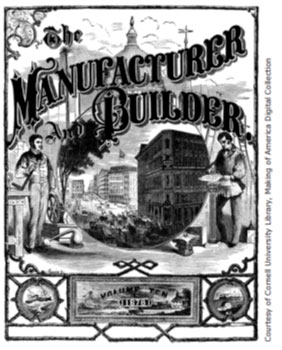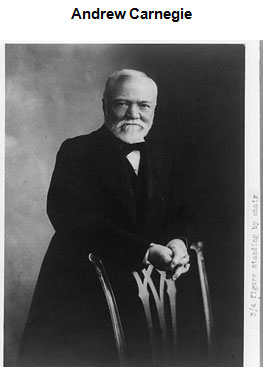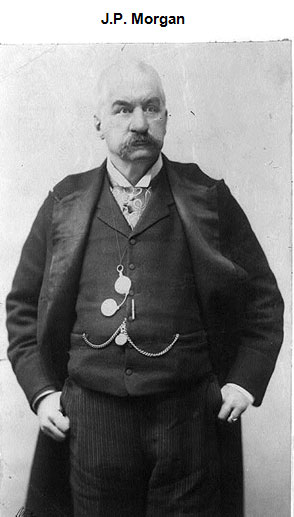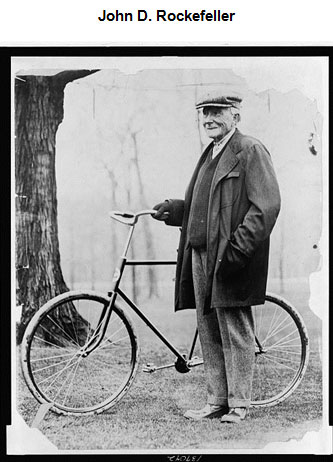
Source: The Manufacturer and Builder, Cornell University, Making of America Digital Collection
The industrialization of the United States brought economic growth to the country like never before. The economy moved from agrarian to industrial; consumer goods were mass-produced and readily available. However, manufacturing was not the only industry that experienced growth. The railroad industry grew as the need to transport people and goods increased.

Source: The Manufacturer and Builder, Cornell University, Making of America Digital Collection
The rapid growth of the manufacturing industry created a great need for unskilled workers. This demand caused migration as farm workers moved from rural areas of the United States to find jobs in America’s rapidly growing cities. The increase in jobs was also a draw for people in foreign countries. Many people immigrated to the United States in search of work and the opportunity to live the American dream.
While industrialization led to an increase in jobs, it also led to poor working conditions for this new industrial labor force. Workers were forced to work in dangerous conditions surrounded by heavy machinery. Unskilled laborers required little training and completed routine tasks. They also worked long hours and were paid low wages.
Big business owners benefitted tremendously from the economic changes in the United States. Some historians have said that these entrepreneurs were robber barons because they got rich through ruthless means. Others have called them captains of industry because they were greatly responsible for increasing productivity, expanding markets, providing jobs, and increasing the nation’s wealth. Read below to learn more about a few of these business owners.

Source: Andrew Carnegie, three-quarter length portrait, standing behind chair, facing front, Library of Congress
Andrew Carnegie is one of the most notable entrepreneurs of the Gilded Age. Carnegie, a native of Scotland, immigrated to the United States in 1848. The Carnegie family settled near Pittsburgh, Pennsylvania, where his father got a job in a cotton factory. Andrew also worked in the same factory as a bobbin boy. He made $1.20 per week.
Andrew Carnegie later worked as a messenger for a telegram company, a personal secretary, and other positions in Pennsylvania. Later, Carnegie went on to own companies in the railroad, bridge, and oil industries. His most successful business was his steel company, U.S. Steel. Carnegie amassed a fortune of more than $300 billion in today’s dollars; yet his workers had to endure low wages, long hours, and harsh working conditions.
Later in life, Carnegie became a philanthropist, donating the vast majority of his money to various groups; he established libraries and supported various colleges and universities.
Click the link below to watch a video clip about Andrew Carnegie and his life.

Source: J.P. Morgan, Library of Congress
J.P. Morgan was a U.S. banker. Born in Hartford, Connecticut, Morgan became one of the most famous financiers in the United States.
With his power and influence, Morgan successfully reorganized railroad companies that served the eastern half of the United States. He helped regulate the railroad rates, which in turn discouraged competition between the railroads. While reorganizing the railroads, he also controlled the stock of these companies. By 1900, Morgan was one of the most powerful railroad moguls in the world.
Morgan also worked on consolidating major industries. In 1898, he merged several steel corporations, including the one he bought from Andrew Carnegie, forming U.S. Steel Corporation. This became the world’s first billion dollar corporation.
Morgan’s banks controlled the financing for many industries in the United States, including shipping, railroad, and steel. Morgan was accused of creating monopolies in two industries in particular, railroad and steel. Morgan was so powerful that the U.S. government asked him for help out of a financial crisis in 1895, and again in 1907.
Click on the link below to watch this video clip about J.P. Morgan and his life.

Source: John D. Rockefeller, full-length portrait, standing with a bicycle, Library of Congress
John D. Rockefeller was a prominent business owner in the oil industry. Rockefeller was born into a working-class American family. Early in life he worked various jobs, learning invaluable skills along the way.
In the 1860s, Rockefeller invested in the oil industry. He opened a refinery and later founded Standard Oil. Rockefeller then bought out smaller oil companies, thereby limiting competing oil companies. He convinced railroad companies to lower rates for his companies. Soon Rockefeller had created a monopoly in the oil and railroad industries.
Standard Oil became extremely profitable because of its monopolistic practices. Nevertheless, Rockefeller paid low wages to his workers. When workers protested or went on strike, Rockefeller would close a worksite, rather than pay higher wages.
Later in life, Rockefeller gave away half of his fortune, more than $500 million, to various causes.
Click on the link below and watch a video clip about John D. Rockefeller and his life.
In this cartoon, Standard Oil is portrayed as a menacing octopus whose tentacles are reaching toward various entities in American society.
![]() Scroll over the cartoon to answer the questions that follow in your notes.
Scroll over the cartoon to answer the questions that follow in your notes.
What do the tentacles represent?

How would you describe the facial expression on the octopus?

Based on the cartoon, what is Standard Oil’s next intent?

How does this cartoon illustrate the monopolies that Standard Oil was accused of creating?

Source for image used in the interactive: